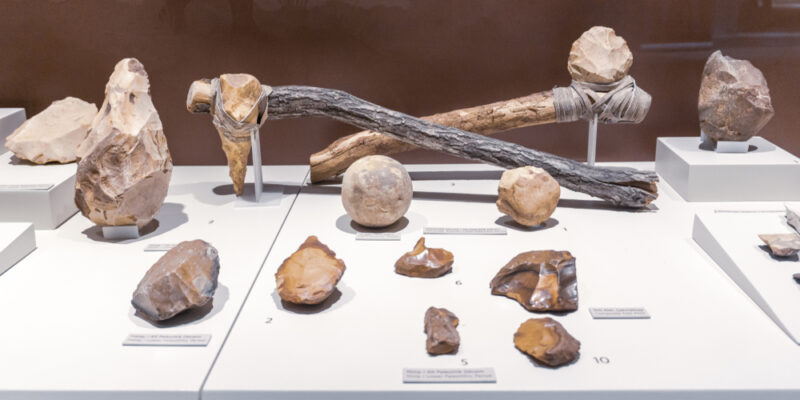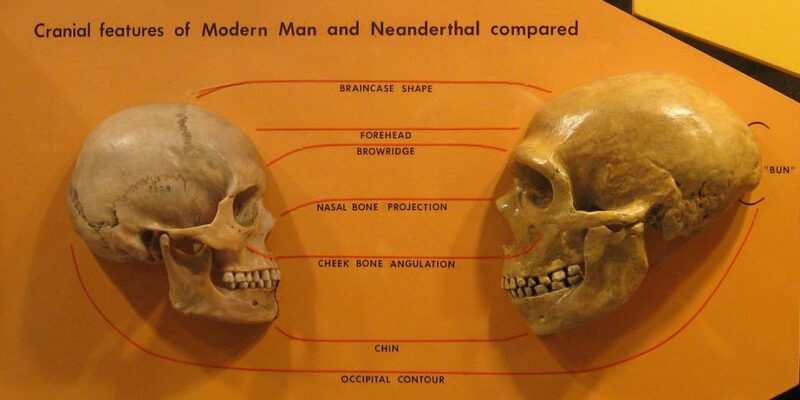We explain what Homo sapiens is, when and where it originated, and how it is classified. In addition, we explore its characteristics and evolution.

What is Homo sapiens?
Homo sapiens is the scientific name for the human species. The use of the term makes reference to human evolution and specifically, to the species that gave rise to modern humans.
Human evolution spans over 4 million years, incorporating various genera and species of hominids. For the past 500,000 years, only one hominid species has evolved from Homo erectus to Homo sapiens, and in turn, to the subspecies Homo sapiens sapiens, to which modern humans belong. This transition ended approximately 35,000 years ago.
Human evolution and its evolutionary phases remains a subject of continuous research, studied across diverse disciplines. The interpretation of fossil finds, the relationships between different species and subspecies, and how the evolutionary leaps between them occurred continue to be points of controversy among experts.
Hence, classifications or definitions constantly evolve in light of new discoveries.
- See also: Human evolution
Origin of Homo sapiens
Homo sapiens is the species that evolved from Homo erectus. The evolutionary transition began 500,000 years ago, but it was not until 200,000 years ago that Homo sapiens distinctly evolved as a separate species. This transitional variety of Homo sapiens is termed archaic Homo sapiens.
There has been long-standing debate regarding the origins of Homo sapiens, leading to two primary opposing hypotheses:
- Candelabra model: polygenism. It holds that the ancestral populations of Homo erectus worldwide evolved gradually and independently into Homo sapiens. Proponents of this model argue that contact between different geographic populations was crucial in maintaining gene flow, ensuring collective rather than isolated evolution.
- Noah's ark model: monogenism. It posits a common origin, followed by migrations to other continents. Homo sapiens would have originated in Africa, and subsequently migrated to Eurasia.
Most scientists today support the monogenist model. However, hybrid scenarios between the two models are often considered to explain the origin of Homo sapiens. For instance, some argue that there would have been a common origin, rapidly succeeded by migrations where newcomers interbred with archaic Homo sapiens populations.
- See also: Homo erectus
Homo sapiens in the evolutionary framework
Like earlier species of the genus Homo, Homo sapiens is a bipedal mammal species exhibiting bilateral body symmetry and sexual dimorphism: females and males are distinguished by body features (females have breasts, narrow waists and vulva; males lack breasts, are more muscular and have a penis).
The upper limbs of humans have prehensile hands with opposable thumbs, allowing them to create and grasp various types of tools.
In comparison to species from earlier evolutionary phases, Homo sapiens exhibits the following characteristics:
- Cranial capacity. Expands cranial capacity averaging 1,500 cc, believed by scientists to possess an intellectual potential equivalent to modern humans.
- Height. Grows in height, reaching an average of 5 ft 6 in (1.70 m).
- Language development. While the exact origins of language remain uncertain, it is widely accepted that Homo sapiens made a more complex use of language.
- Migration. Inhabited Africa, Europe, Asia, and Oceania. The Homo sapiens sapiens subspecies also migrated to America approximately 40,000 years ago.
- Tool making. Created more elaborate tools and developed different stone carving techniques.
Lifestyle of Homo sapiens

During the Paleolithic (historical period in which Homo sapiens evolved), human social life presented the following characteristics:
- Nomadism. Human groups did not settle in one fixed location. Instead, they migrated, following animals and seasonal cycles.
- Subsistence economy. Homo sapiens fed on food they obtained through hunting and gathering. They developed complex group hunting techniques, using weapons that allowed them to hunt large animals.
- Bands. The nomadic lifestyle and subsistence economy favored the organization of humans into small groups, referred to by historians as "bands", consisting of 20 to 30 individuals. These groups were united by kinship ties, and controlled the territories through which they moved to obtain food.
- Egalitarian societies. Early humans did not have formal leaders or chiefs. Occasionally, an individual might stand out for their abilities and became highly respected. Elders were revered for their experience and held greater authority to resolve conflicts. Nonetheless, they were egalitarian societies where power hierarchies were absent.
Debate concerning Homo sapiens

When archaeologists discover fossil remains, they study them to identify the species to which they belong. This involves analyzing the chemical composition and bone anatomy, as well as the material remains found with the fossils. It is through such studies that academic tradition has, over time, established a phased categorization for human evolution.
However, studies are not always accurate, and scientists often interpret results differently. Hence, debates arise over how to categorize certain discoveries.
This is the case with Homo neanderthalensis, whose remains are a point of controversy among archaeologists, paleontologists and other specialists. At present, most consider it to be a subspecies of Homo sapiens, distinct in features and characteristics from Homo sapiens sapiens (another subspecies of Homo sapiens, which is modern humans).
Evolutionary framework of humans

The main phases of human evolution are considered to be:
- Early ancestors: Australopithecus. This was the first hominid to walk upright and thrived in the African savannas around 4-2 million years ago.
- Origin of the human genus: Homo habilis. Discoveries in Tanzania and Kenya of fossil remains dating 2.5 million years made it possible to identify a separate species, descended from the Australopithecus afarensis. These remains exhibited a larger cranial volume and certain anatomical changes related to posture. They were found alongside lithic (stone) cutting tools.
- Territorial expansion: Homo erectus. Based on remains found in Africa, Europe, and Asia, this evolutionary phase spans between 1.5 million and 500,000 years ago. Homo erectus communities migrated from Africa to other continents. They crafted more complex tools than their ancestors and developed subsistence patterns grounded in cooperation, work division, and the sharing of food. They mastered the use of fire and hunted large animals. Various species and subspecies belong to this phase, which are often categorized by anthropologists as Homo erectus for practical reasons, but include, for example, Homo antecessor and Homo heidelbergensis.
- Hominization process: from Homo sapiens to modern humans. This stage corresponds to the gradual evolution that took place from Homo erectus to the first Homo sapiens (called "archaic"), and, in turn, to a subspecies known as Homo sapiens sapiens, or modern humans. From archaic Homo sapiens also descended another subspecies, known as Homo neanderthalensis. This process began around 500,000 years ago and ended roughly 35,000 years ago, leaving Homo sapiens sapiens as the sole surviving species of the genus Homo.
Explore next:
References
- López Serrano, A. (1996). Proceso de hominización y cultura material. La aportación de la antropología histórica.
- Harris, M. (1981). Introducción a la antropología general. Alianza.
- Leakey, R., & Lewin, R. (1994). Nuestros orígenes. RBA editores.
- “Homo sapiens”. Wikipedia.
- “Evolución humana”. Wikipedia.
- “La edad del Homo sapiens” Maggie Fox. El País.
- “Homo sapiens”. SobreHistoria.com.
- “Homo sapiens”. Dinosaurios.info.
- “El homo sapiens salió de África 60.000 años antes de lo que se pensaba” El País (Uruguay).
Was this information useful to you?
Yes NoThank you for visiting us :)